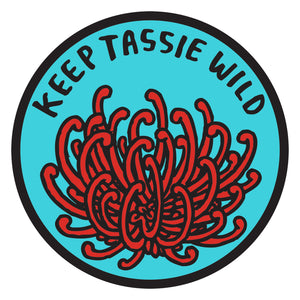That morning I’d driven down to a property about 40 minutes south-west of Nipaluna/Hobart to deliver four 20 litre Fire Fighting Knapsacks to Palawa man and traditional fire practitioner, Jason Smith. They are a donation from Keep Tassie Wild, made possible by the support of our amazing customers.
The house he shares with his son is surrounded by beautiful eucalypt trees which, a few years ago, were impossible to walk under due to an impenetrable mess of chest-high blackberry, bracket and scrub.
Unhealthy country.
Now though, we walk and talk freely through a delightful area of open woodland as Jason excitedly points to something I’d missed: hundreds of orchid plants bursting from the compacted soil of winding wallaby tracks. These, he explains, have popped up since he started burning this area and if they all flower, will possibly be one the densest known patches of orchid flowers in Tassie.






